Our very own MasterChef!
One of our year 10 hospitality and catering students has secured a job at CDJ Riverside Restaurant in Lower Darwen. Jack, who wants to pursue a career in the restaurant…
Read more
Ice hockey star
Congratulation to our year 8 student, Billy, on his amazing ice hockey achievements. Billy and his team, Leeds Junior Knights Ice Hockey Team, recently won the league and national competition…
Read more
Students visit world famous library
Our student librarians had an incredible visit to the world-famous Chetham’s Library in Manchester, the oldest public library in Britain, open to all since 1653 and in continuous use for…
Read more
Talent shines through
Our annual talent content, ‘BCHS Has Got Talent’, was a huge success again this year and we were bowled over with the wealth of talent we have at school. The…
Read more
Cyber First Girls
A selection of our female year 8 students took part in a team event for Cyber First Girls, run by the National Cyber Security Centre. They were put into teams…
Read more
Free winter lunches
Blackburn with Darwen Borough Council’s Family Hub is offering free winter lunches for those in need. Dates and venues can be found below. To register please phone 01254 585000 or…
Read more
Chef in the making
A student at Blackburn Central High School has secured himself a part time job with a renowned Michelin star chef. Sol, a year 11 hospitality student at BCHS, has aspirations…
Read more
Attendance Matters
Attendance Matters At BCHS we place a lot of emphasis on good attendance because it underpins a child’s future achievement, self-confidence and aspiration. As a reward for 100% attendance over…
Read more
BCHS joins Oak Learning Partnership
We’re pleased to inform you that Blackburn Central High School has become part of a new multi academy trust called Oak Learning Partnership. Oak Learning Partnership has a number of…
Read more
Record breaking results for GCSE students
Year 11 students were celebrating after receiving some amazing results in their GCSEs. We are thrilled to report that GCSE results day saw an improvement in results and progress score…
Read more


